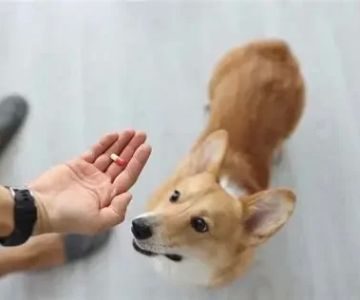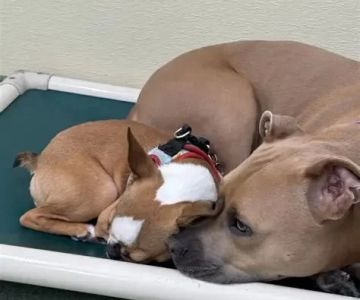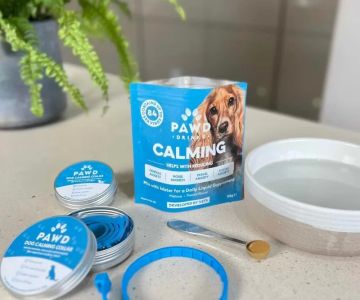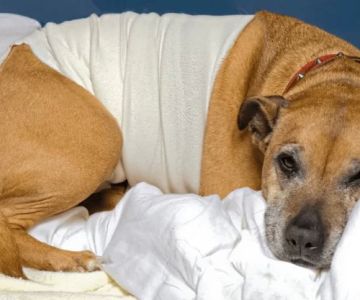Symptoms of Poisoning in Dogs and Cats: What to Watch For
As a pet owner, one of my greatest fears is seeing my dog or cat in distress. A while ago, my cat Bella became suddenly lethargic and wouldn’t eat her favorite treats. I was terrified and rushed her to the vet, only to find out that she had ingested something toxic. The experience made me realize how important it is to be aware of the symptoms of poisoning in pets. In this article, I’ll share what I learned about the signs of poisoning in dogs and cats, how to recognize them early, and what steps you should take if you suspect your pet has been poisoned.
1. Understanding Pet Poisoning
Poisoning can happen to any pet, whether they are dogs or cats. It can be caused by a variety of things: household cleaners, plants, human foods, medications, or even certain chemicals. I remember when my dog Max once chewed on some household cleaner that had been accidentally left within reach. The initial symptoms weren’t immediately noticeable, but after a few hours, I noticed him acting strangely. As a pet parent, it’s essential to stay vigilant and know how to spot the signs of poisoning before they worsen.
1.1 Common Causes of Poisoning in Pets
It’s important to understand the most common causes of poisoning in pets. Some of the more frequent culprits I’ve seen include:
- Human Foods: Chocolate, grapes, raisins, onions, and alcohol are toxic to both dogs and cats.
- Medications: Over-the-counter pain relievers, like ibuprofen or acetaminophen, are harmful to pets.
- Household Chemicals: Cleaning supplies, antifreeze, and pesticides can be deadly if ingested.
- Plants: Some plants, such as lilies and azaleas, are highly toxic to cats, while others like marijuana or xylitol are dangerous for dogs.
- Rodenticides: Poison designed to kill rodents can have a fatal effect on dogs and cats if ingested.
2. Symptoms of Poisoning in Dogs
If you suspect your dog has been poisoned, it’s crucial to act fast. Dogs, being naturally curious, are often prone to ingesting toxic substances without realizing the danger. Here are the common symptoms I’ve encountered and learned to watch out for:
2.1 Vomiting and Diarrhea
One of the most immediate signs of poisoning in dogs is vomiting or diarrhea. When Max accidentally ingested some household cleaner, he immediately began vomiting. This is the body’s way of attempting to expel the toxins before they can be absorbed. If your dog is vomiting continuously or has diarrhea that lasts for more than a few hours, this could be a sign of poisoning.
2.2 Lethargy and Weakness
Poisoned dogs often become lethargic or excessively tired. I remember how Max became unusually quiet and didn’t want to play with his favorite ball after ingesting something toxic. If your dog is suddenly acting very tired or weak, especially if they’re usually energetic, it may indicate poisoning.
2.3 Excessive Drooling or Foaming at the Mouth
Excessive drooling is another symptom I noticed in Max when he had been poisoned. Some toxins can cause dogs to produce more saliva than usual, and it can sometimes result in foaming at the mouth. If you notice this, it’s important to seek veterinary help immediately.
2.4 Abnormal Behavior
Dogs that are poisoned may exhibit abnormal behavior such as confusion, disorientation, or even seizures. When Max had his poisoning episode, he started acting confused and was unable to walk in a straight line. This was alarming, and I knew it was time to get him to the vet right away.
2.5 Difficulty Breathing
If a dog’s poisoning is severe, it can affect their respiratory system, causing difficulty breathing. Shortness of breath or labored breathing can indicate a serious situation that requires immediate medical attention. Keep an eye on your dog’s breathing patterns and call your vet if you notice anything unusual.
3. Symptoms of Poisoning in Cats
Just like dogs, cats can also suffer from poisoning. I’ve learned that cats often hide symptoms, which can make it harder to spot the issue right away. Here are some symptoms to look out for if you suspect your cat has been poisoned:
3.1 Vomiting and Lack of Appetite
Vomiting and a sudden lack of appetite are common signs of poisoning in cats. Bella, my cat, once refused to eat for a whole day after chewing on a toxic plant. If your cat isn’t eating and is vomiting frequently, this could indicate they’ve ingested something harmful.
3.2 Dilated Pupils or Constricted Pupils
One of the more alarming signs I noticed with Bella was her dilated pupils. Poisoning can cause significant changes in a cat’s eye response. Constricted or dilated pupils can be a result of toxic substances affecting the nervous system. If you notice your cat’s pupils are unusually large or small, it’s a good idea to contact a vet.
3.3 Difficulty Walking or Uncoordinated Movements
Poisoning can lead to coordination issues in cats, making them stumble or appear unsteady. Bella once exhibited these symptoms after ingesting a toxic plant, and I knew it was time to act. If your cat is having trouble walking or seems uncoordinated, seek veterinary help immediately.
3.4 Sudden Behavioral Changes
If your usually calm cat becomes overly aggressive or starts behaving erratically, it could be a sign of poisoning. In Bella’s case, she became more agitated and vocal than usual after ingesting something harmful. It’s important to track your pet’s behavior and look for any sudden changes.
3.5 Tremors or Seizures
In severe cases of poisoning, cats can experience tremors or seizures. If you see your cat shaking or experiencing convulsions, this is a medical emergency, and you should take them to the vet immediately. This can be life-threatening if not addressed quickly.
4. What to Do if You Suspect Poisoning
Acting quickly is key if you suspect your pet has been poisoned. Here’s what you can do based on my experience:
4.1 Contact Your Veterinarian
Whenever I suspect poisoning, the first thing I do is call my vet or an emergency animal hospital. Time is critical, and the faster your vet can assess the situation, the better the outcome for your pet.
4.2 Keep a Record of What Was Ingested
If possible, try to determine what your pet ingested. I’ve learned that knowing the substance involved can help the vet administer the right treatment. Whether it’s a plant, chemical, or food, make a note of it and bring any packaging or labels with you to the vet.
4.3 Don’t Attempt to Treat Your Pet Without Professional Guidance
It’s tempting to try and treat your pet at home, but I learned the hard way that it’s best to rely on professional help. Certain substances require specific treatments that only a vet can provide. Always consult a professional before administering any home remedies.
Poisoning in pets is a terrifying experience, but knowing the symptoms and how to react can make all the difference in saving your pet’s life. Stay vigilant, and if you notice any of the signs I’ve shared, don’t hesitate to contact your vet right away. Early intervention is key to a positive outcome.










